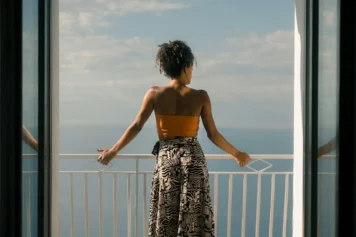No question stumps a New Yorker more than the most common one from a first-time visitor: what should I do in New York City?
There is no right answer. What to do in New York? For some, it’s seeing familiar cinematic scenes like taking Melanie Griffith’s Staten Island Ferry commute from Working Girl, or peeking into Tiffany’s window on Fifth Avenue. For others, it’s eating a hot dog in the bleachers at Yankee Stadium, or just experiencing the diversity of neighborhoods (after moving here from Oklahoma, I’d walk to Chinatown for Saturday dim sum every week for a year). And for some it’s just theater, theater, theater.
You already carry a few imprinted images of New York City – start by making them real, then be open to wherever the city takes you. Just know that understanding the Big Apple at all will mean, at the very least, coming back for a second and third time.
Where to stay?
No matter where you go, expect less space and higher prices for hotels in New York – it’s just the way it is. There’s no set high season, and the price for a hotel room regularly exceeds $300 a night (but don’t be deterred, there are cheaper ways to stay if your budget is tight – see below).
Most first-timers understandably want to be near attractions and restaurants in Manhattan (the most popular of the five boroughs), and in particular the Broadway theater district around Times Square, the only part of Midtown with much life after dark. A block off the square, Casablanca Hotel’s Moroccan theme and comfortable rooms are big for visitors, with rooms starting at a slightly reasonable $249.
Just north, the Upper West Side is a good, safe choice for a more ‘neighborhood’ feel with plenty of theaters, restaurants and bars, plus it’s right on Central Park. A great choice is the Country Inn the City, set in a 1891 limestone townhouse on a tree-lined block; rooms have kitchenettes and start at $220. To the south, Chelsea, the Meatpacking District and Greenwich Village offer more bustle and nightlife, easy access to everything, but fewer hotel options and often higher rates.
Many visitors will take a trip to the Statue of Liberty and visit the 9/11 Memorial and Wall Street in Lower Manhattan, but – to be honest – there’s nothing happening at night. It’s best to go by day and base yourself elsewhere.
Find a spot to rest your head among the many Lonely Planet author reviewed properties around New York.
When to go?
I’m going to say it: summer can be just horrible in New York. Sidewalks are crowded, and those used to air-conditioned lives will be shocked at how 90°F (32°C) feels on a humid day when getting to and fro means more footfall than usual.
Spring and fall are simply the best times to go to New York City. For spring, time a trip to see the superb Cherry Blossom Festival at the Brooklyn Botanic Garden in April. For fall, there are oodles of fun events including the New York City Marathon in early November, with a rare five-borough scene of good cheer on the sidewalks. And don’t forget winter – it’s cold but the city lights up around Christmas and New Year.
Four biggest NYC first-timer myths
1. Myth: NYC is way too expensive
There’s so much to see for free or cheap in New York that I’ve put together a list of 40 free attractions, and despite all the swank restaurants, there’s no more classic New York meal than taking a sandwich or street vendor falafel to Central Park on a nice day.
Accommodation-wise, consider skipping a hotel and renting a private or shared apartment with locals through a dependable site like Airbnb.com; you save more if you’re willing to stay in nice neighborhoods of Brooklyn or Queens…
Read more: Lonely Planet


